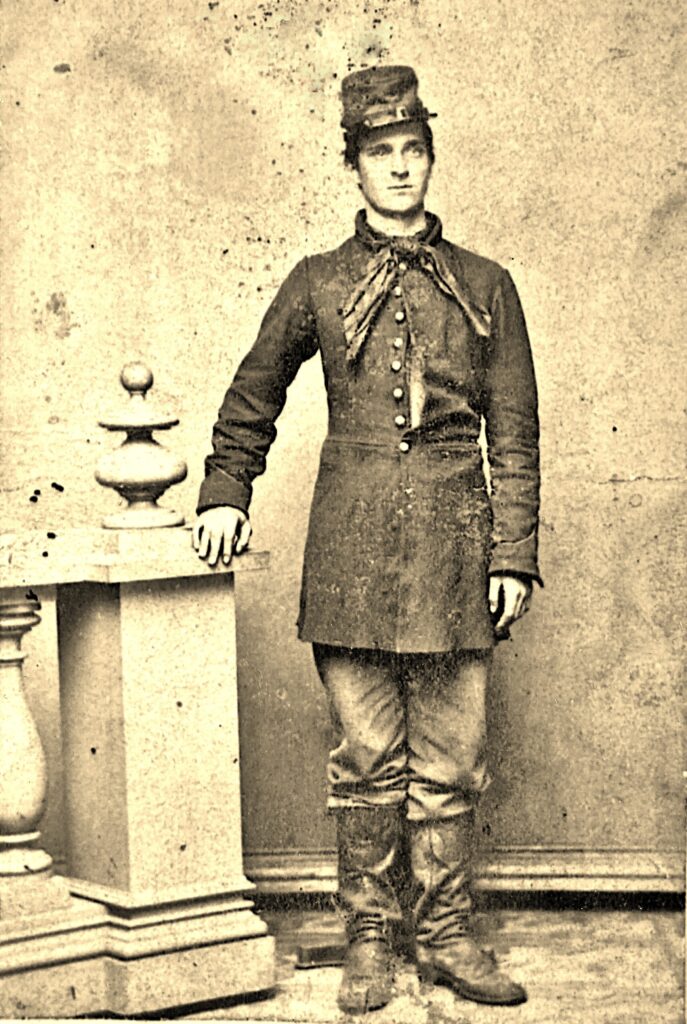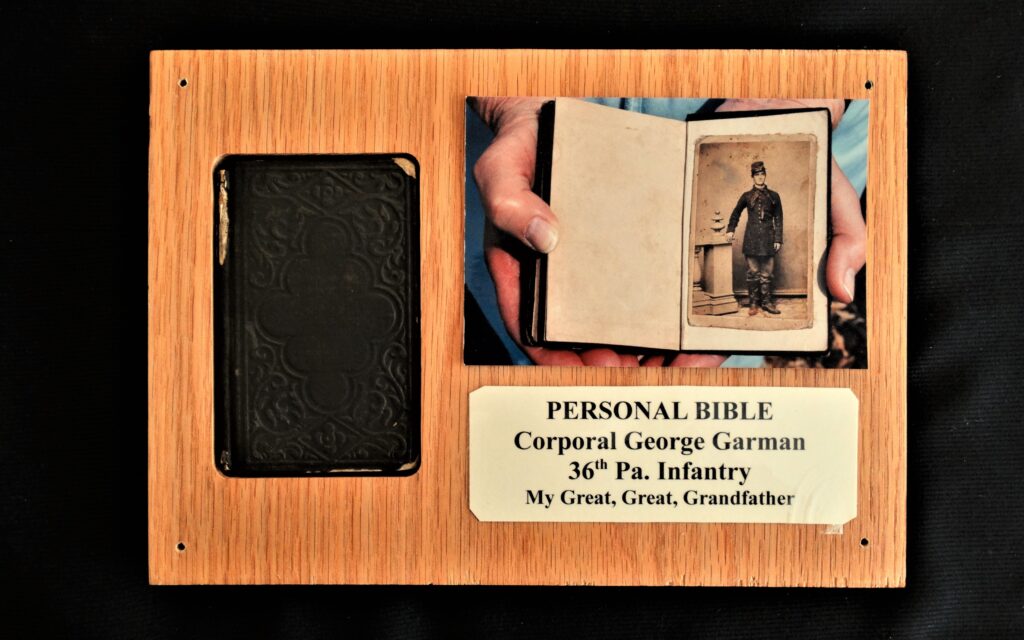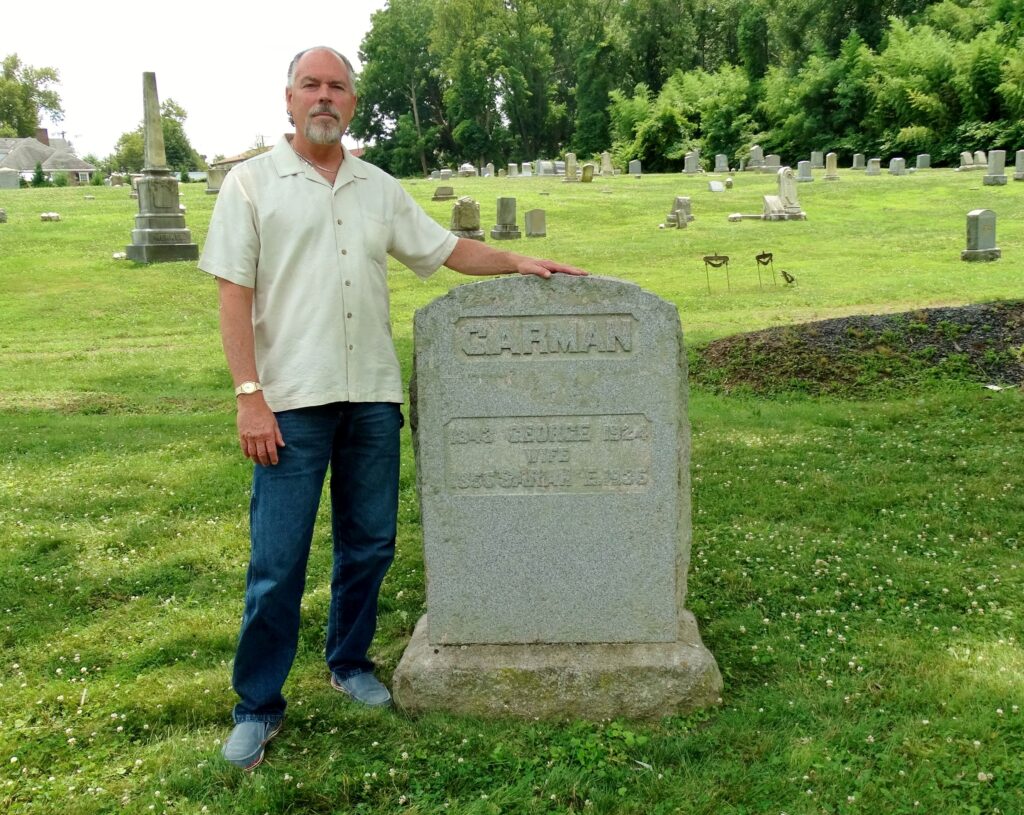The American Civil War has a lot of hidden history, and Old Baldy member Joe Wilson has dedicated the last 10 years of his life to uncovering some of those stories and turning them into documentary films. It has been quite an enlightening experience for the man The Philadelphia Inquirer has called plumber-turned-screenwriter.
Joe was born in 1952, Camden, NJ, one of nine children. He graduated from Camden Catholic High School in 1970 then attended Camden County College thinking he might go into management. Instead, Joe obtained his Master Plumber license and remained in that profession, retiring from the Hospital of the University of Pennsylvania in 2012 after 33 years of service
Joe has been researching and studying the Civil War for over 25 years with most of his research on Civil War prisons. He believes the thousands of prisoners who needlessly starved to death is the saddest chapter of the Civil War. Once he retired, Joe started focusing much of his time and energy on researching, writing, and producing three Civil War documentaries. His first, made with his musician brother Mike Wilson and their collaborator Richard Mendoza, was Civil War Prisons – An American Tragedy, which garnered rave reviews after screenings at Camden County College and the Garden State Film Festival at Resorts Casino in Atlantic City

Inspiration for the film came from my great-great-grandfather, Corporal George Garman, who survived the notorious Confederate prison at Andersonville, Georgia, where 13,000 Union soldiers perished. The 26-acre prison site is easily the deadliest piece of ground in America. Cpl. Garman was in prison there for five months and three months in Florence Stockade (S.C.) when he was moved to elude General William Sherman. He died in 1924 at the age of 80. The prisoner experience remains to this day the least reported aspect of the Civil War. Joe went on to make two more films: Remarkable Tales of the Civil War and Civil War Dead – Dignity Denied
A self-taught writer, Joe has penned a book, In the line of Battle: The Pennsylvania Reserves (Cpl. Garman and 250 of his comrades in the Seventh Pennsylvania Reserves Regiment fell into Confederate hands May 5, 1864 at the Battle of the Wilderness) and also gives presentations and lectures on the subject. He writes for Civil War News and other publications

Among the many local appearances Joe makes to educate the community on the Civil War, the ones where he exhibits the personal Bible of his great-great-grandfather are the most meaningful. The Bible is part of Joes collection of Civil War relics and it came into his possession by a series of remarkable events after a visit to Greenwood Cemetery in Northeast Philadelphia. Glued to the inside of the back cover is a photo of Cpl. Garman, in uniform, thought to be taken upon his release from Andersonville Prison. Also noteworthy in the collection are a colt handgun owned by a Captain and a sword owned by a Lieutenant. Because each item has been stamped with the name of the soldier who handled them, Joe is able to trace the story behind the relics. I like to collect things that have a solid history. Those names tell me all the battles the soldier has been in. I imagine the Captain who owned the gun was leading his men forward, and the Lieutenant with the sword was charging. Both were killed in battle. These weapons were in the hands of the guy killed.

Joe is not just a Civil War guy. From an early age he was interested in major American wars, including WWII. He occasionally gives a PowerPoint at local venues on the Merchant Marine and how crucial they were to winning the war. His father served aboard the famed Liberty ships that were used to transport vital supplies to the Allies. Manning these vessels was an extremely dangerous task, and that is what Joe talks about in his presentations. “I do it to honor my father and uncle, who also was in the Merchant Marine.
Joe came to the Old Baldy Civil War Roundtable 10 years ago after the group moved to South Jersey. He is also a member of the General Meade Society and the Civil War Trust. He lives in Magnolia, NJ and has two children and three grandchildren.







